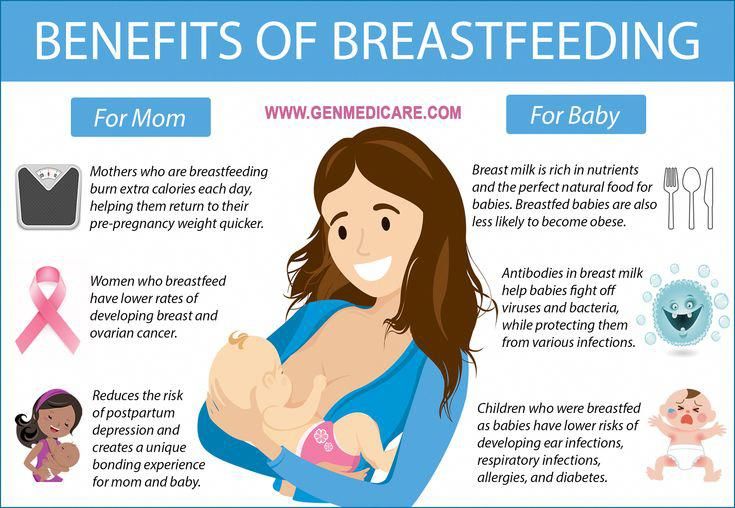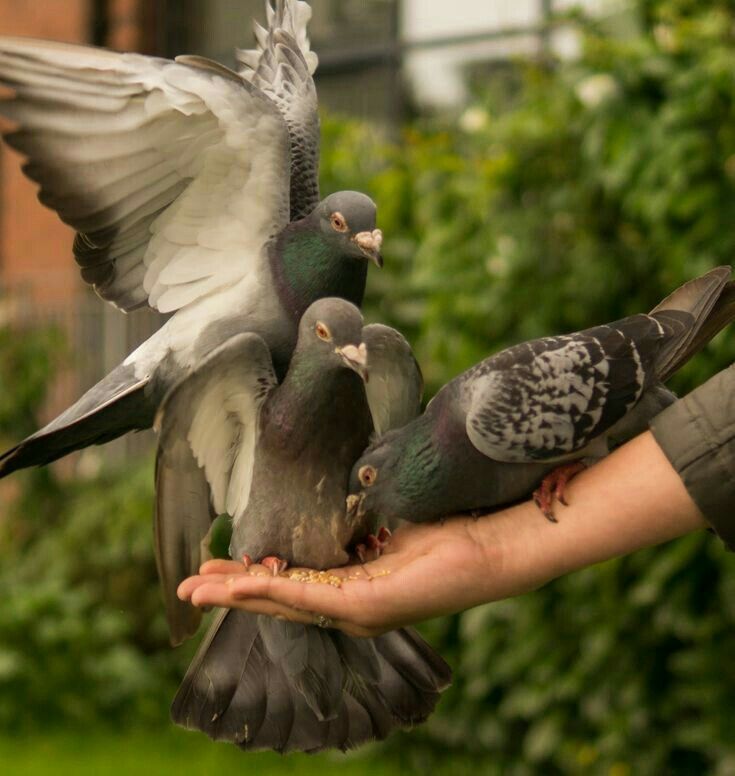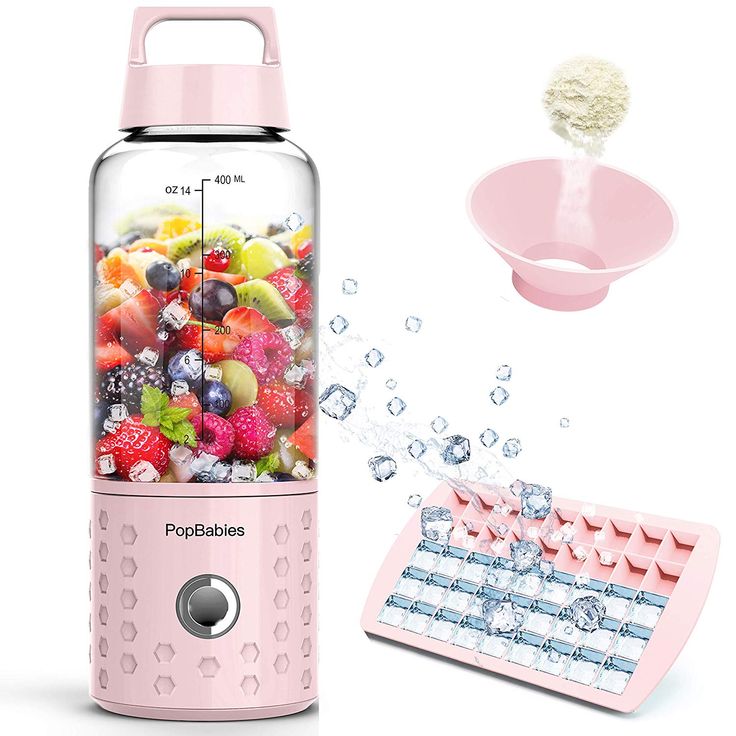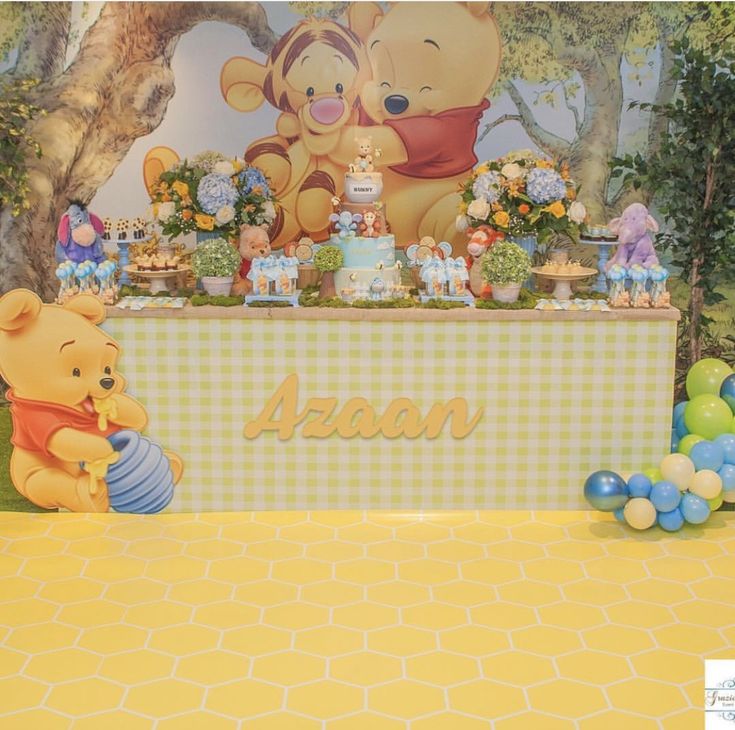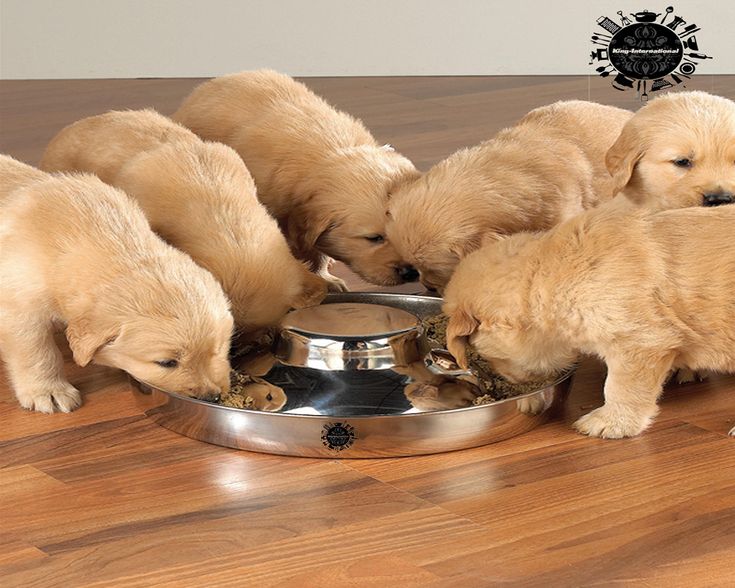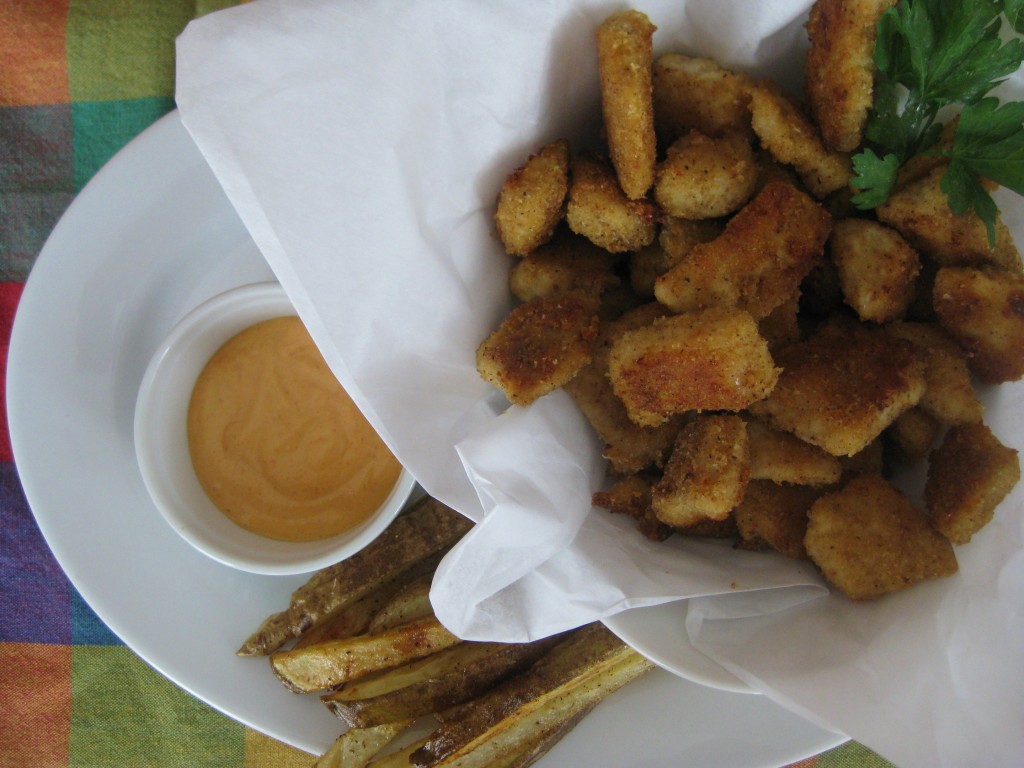When to feed baby corn
When babies can eat corn
A starchy vegetable that contains lots of B vitamins, as well as essential minerals (including zinc, magnesium, copper, iron, and manganese), corn is made up mostly of insoluble fiber. That means it's digested slowly and doesn't cause a spike in blood sugar. Corn is also rich in antioxidants that are important for eye health and development.
When can babies have corn?
Corn can be a healthy part of your baby's diet soon after they start eating solid food, usually around 6 months old.
To prevent choking, avoid giving your baby whole corn kernels until they can chew the kernels completely. This may be around 12 to 18 months, depending on their chewing skills. Until then, puree corn into a thin consistency and serve it plain, or mix it with other pureed baby food (like cereal, meat, or other vegetables).
Can babies be allergic to corn?
Corn isn't one of the top allergenic foods, but it can still cause allergies. Experts say most babies can start eating foods like corn after introducing a few traditional first foods (such as baby cereal, pureed meat, vegetables, or fruit) without causing an allergic reaction.
If your baby has chronic eczema or another food allergy, talk to their doctor before giving them new foods.
When trying a new food, experts recommend giving it to your baby at home, rather than at daycare or a restaurant. Serve it for three to five days before offering another new food; that way you can monitor your baby for a reaction and know what's likely causing it.
Signs of a food allergy include hives, itchy skin rashes, swelling, nausea, vomiting, diarrhea, and pale skin. If you notice any of these symptoms in your baby, let their doctor know. If your baby has symptoms that involve multiple parts of the body (such as hives with vomiting or diarrhea), it could be an anaphylactic reaction.
Other signs of an anaphylactic reaction are throat tightness, breathing problems, wheezing, lightheadedness, and loss of consciousness. If your baby shows signs of an anaphylactic reaction after eating corn, call 911 or go to an emergency room immediately.
How to serve corn to babies
Because whole corn kernels off the cob are a choking hazard for your baby, puree corn and serve it to your baby on its own or stir it into a smooth soup until your child can safely chew the kernels.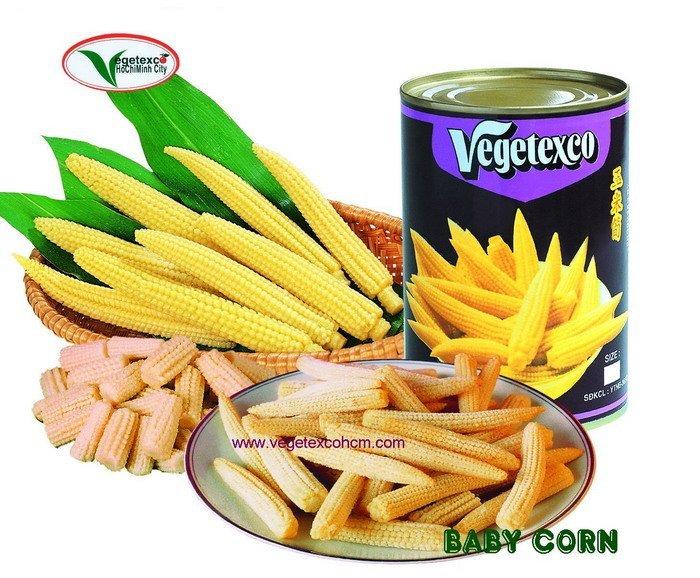
You can also give your baby plain grits and polenta. If the consistency is too thick, thin it out with extra water (or breast milk or formula) to make it easier for your baby to eat. You can also stir in some pureed meat, vegetables, or fruit.
If you're following a baby-led weaning approach, you can try offering your baby corn on the cob. This way, your baby can gnaw on the cob and smash the kernels, reducing the risk of choking.
Try this quinoa, black beans, and corn recipe for your toddler (but only if they've developed good chewing skills, since it contains whole corn kernels).
Corn for Baby | Homemade Corn Baby Food
Corn in Baby Food Recipes – Learn When your Baby can Have Corn & How to Prepare Corn for Baby
Corn can be a great finger food for your baby but corn is probably not the best “meal” type of baby food however.
The Goodness of Corn for Baby Food:
Corn contains a good amount of protein and carbohydrates – making it a great food for energy.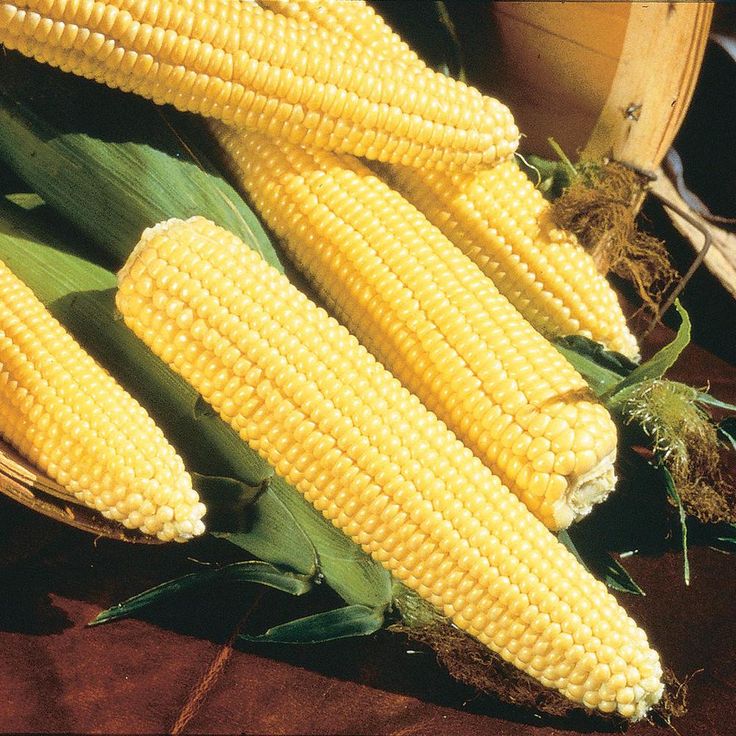
Corn, however, is lacking in many other nutrients. The nutritional value or corn compared to a majority of other vegetables is substandard; save it for later. Another good reason to offer your baby corn later is that it makes a great finger food.
Corn (one cup – cooked)
| VITAMINS:Vitamin A – 392 IU Vitamin C – 8.2 mg Niacin – 2.5 mg Folate – 0 mcg Pantothenic Acid – 1 mg Vitamin B6 – .2 mg Lutein – 1350 mcg Contains some other vitamins in small amounts. | MINERALSPotassium – 325 mg Sodium – 1 mg Calcium – 4 mg Phosphorus – 115 mg Iron – .67 mg Also contains small amounts of selenium, manganese, copper and zinc |
When to introduce Corn to your baby?
Age for Introducing: 8-10 months or 10-12 months
Corn is another one of those confusing food when it comes to baby feeding. Most sources do say that corn is best given after 12 months old. One of the reasons is that corn is a potential high allergen food and another reason is that corn may be a choking hazard. Further, introducing corn after 12 months old, as a finger food, may be more appropriate because an older baby/toddler should be able to properly “chew”/mash the nibblets.
Most sources do say that corn is best given after 12 months old. One of the reasons is that corn is a potential high allergen food and another reason is that corn may be a choking hazard. Further, introducing corn after 12 months old, as a finger food, may be more appropriate because an older baby/toddler should be able to properly “chew”/mash the nibblets.
During the first year of baby’s life, it is very important that baby receive all the nutrients possible. Corn is comprised mostly of starchy carbs and is considered an “empty” calorie food for the most part. Waiting to introduce corn in favor of a more nutrient dense food may be a better option. Corn really has very little nutritive value and I think it’s best to leave it for later.
Yet another reason to hold off on corn is that it is particularly difficult to digest and as we all know, it tends to pass through the system in the same form that it went into the system.
Corn derivatives (such as corn flour, syrup, starch etc. ) are found in many foods and many infant formulas also contain corn syrups and corn starch. With that being said, there is a vast difference between feeding an infant a “meal” of corn as compared to feeding an infant a food item that may have a corn derivative in the ingredients.
) are found in many foods and many infant formulas also contain corn syrups and corn starch. With that being said, there is a vast difference between feeding an infant a “meal” of corn as compared to feeding an infant a food item that may have a corn derivative in the ingredients.
As always, you should thoroughly discuss any feeding issues with your pediatrician as generalities may not apply to your child; this recommendation is very important when you wish to introduce possible high allergen foods to your infant.
How to select and store corn for homemade baby food
According to the EWG, corn is not one of the “dirty dozen” foods that are most highly contaminated with pesticides – purchasing organic is a personal choice. The one concern with much of the corn grown in the US is that it is GMO; if you are able, purchase non-GMO corn (and any other food that may be GMO such as soy beans or tofu).
When buying fresh corn, you should peel back the husks a wee bit to see it the tip of the corn is in good condition. Squeeze the corn and feel for firmness; soft squishy fresh corn is not a good choice.
Squeeze the corn and feel for firmness; soft squishy fresh corn is not a good choice.
Store corn in the refrigerator. Corn will keep longer if it is not husked so only husk the corn if you will be using it within 2 days.
The Best Way to Cook Corn
Cooking corn is very simple, remove the husks and toss it into a large pot of boiling water. You may also grill corn (we find this method brings out the best flavor of fresh corn.) You may also “shave” it off the cob and then either steam or boil the corn nibblets. Using frozen corn is also an option, just follow the cooking directions on the package.
A Few Corn Baby Food Recipes
Corn – Basic Purée
Ingredients:
Any amount of fresh corn you desire
Directions:
Step 1: Husk and boil the corn on its cob until tender
Step 2: Shave off corn from the stalk
Step 3: Place into your choice of appliance for pureeing and begin pureeing. Use a sieve if needed to get rid of the hulls from the nibblets.
Use a sieve if needed to get rid of the hulls from the nibblets.
Step 4: Add water as necessary to achieve a smooth, thin consistency
OR
Step 1: Cook frozen corn (watch for salt) according to package directions
Step 2: Follow Steps 3 and 4
Corn, Apple & Sweet Potato
Ingredients:
- Corn nibblets- about 2 cups
- 1 apple – peeled, cored and diced
- 1 sweet potato – peeled and diced
Directions:
Step 1: Cook the corn using your preferred method
Step 2: Steam until tender – apple and sweet potato
Step 3: Place corn, apple and sweet potato into your choice of appliance for pureeing and begin pureeing. Chop or dice for finger food
Step 4: Add water as necessary to achieve a smooth, thin consistency – you will probably not need to add water as these foods are watery as it is.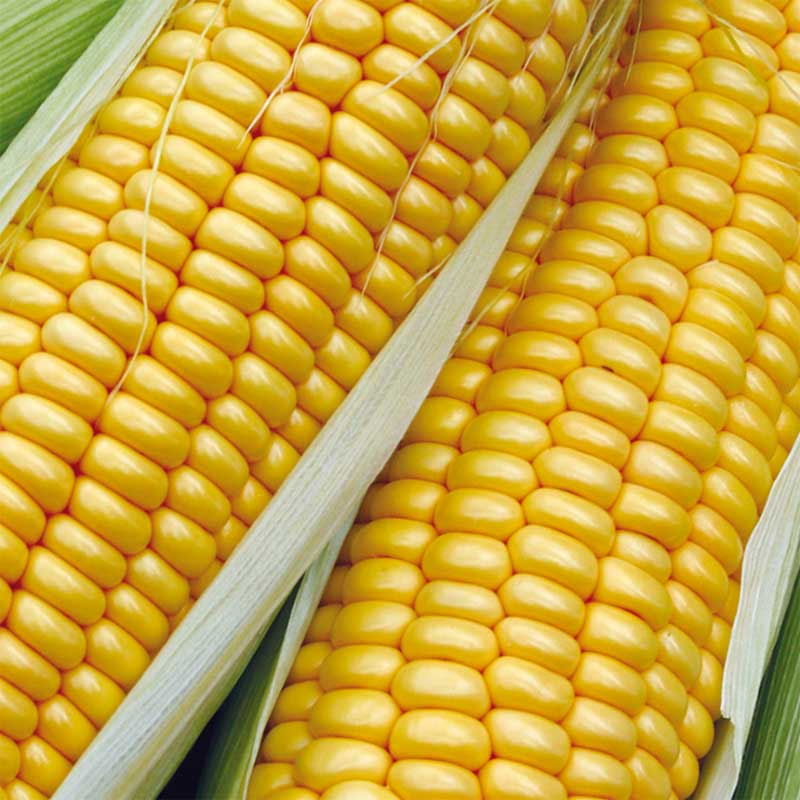
Creamy Corn & Cauliflower
Ingredients:
- Corn nibblets- about 2 cups
- 1 cauliflower – washed and chopped, use the florets (visit the cauliflower page for detailed prep method)
- 1 cup whole milk yogurt
- pepper
Directions:
Step 1: Cook the corn using your preferred method
Step 2: Steam th cauliflower florets until tender
Step 3: Once veggies are cooked, allow to cool then transfer in portions to your blender/food processor and puree. Add yogurt and pepper as you puree until you have a creamy consistency.
Makes approximately 3 cups
Foods Good to Mix With Corn for Baby Food:
- Apples
- Carrots
- Green Beans
- Dried Beans
- White Potato
- Peas
- Summer Squash – zucchini or yellow/crooked necked
- Brown Rice
- Lentils
- Chicken
- Beef
- Pork
Resources and Learning More About Corn:
- National Corn Grower’s Assoc.
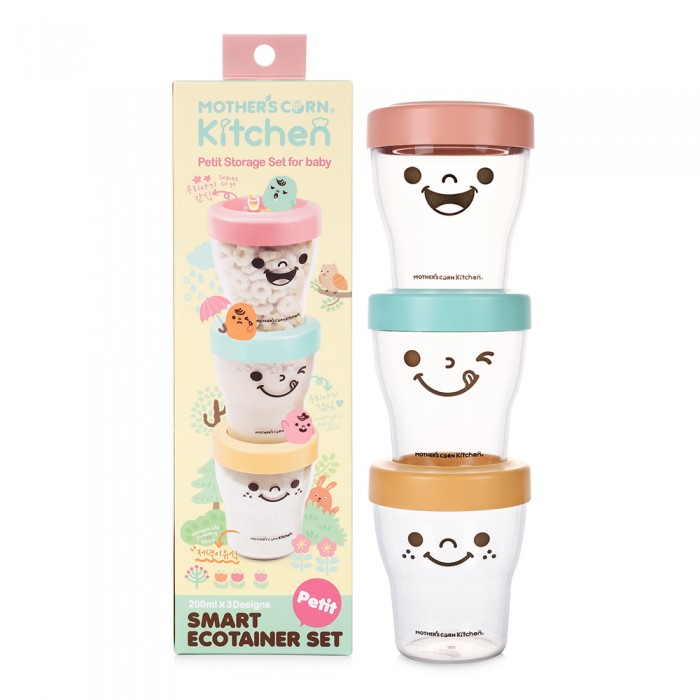
- BT Corn – Genetically Modified Corn- how it’s being made better
- Corn from wholehealthmd.com
Remember, always consult with your pediatrician regarding introducing solid foods to your baby and specifically discuss any foods that may pose allergy risks for your baby.
This site complies with the HONcode standard for trustworthy health information:
verify here.
SHARE ON FACEBOOK SHARE ON PINTEREST
Boiled corn for children - Encyclopedia Baby food
Viktoria Levchuk©One of the best summer vegetables is corn on the cob. Most adults and children enjoy its sweet taste and make an ideal accompaniment to most meals. Boiled corn for children is a wonderful summer side dish.
Corn contains a lot of protein and carbohydrates, which makes it an excellent source of energy. However, it lacks many other nutrients. Corn is a great finger food, which is a good reason to offer it later than 12 months to your baby.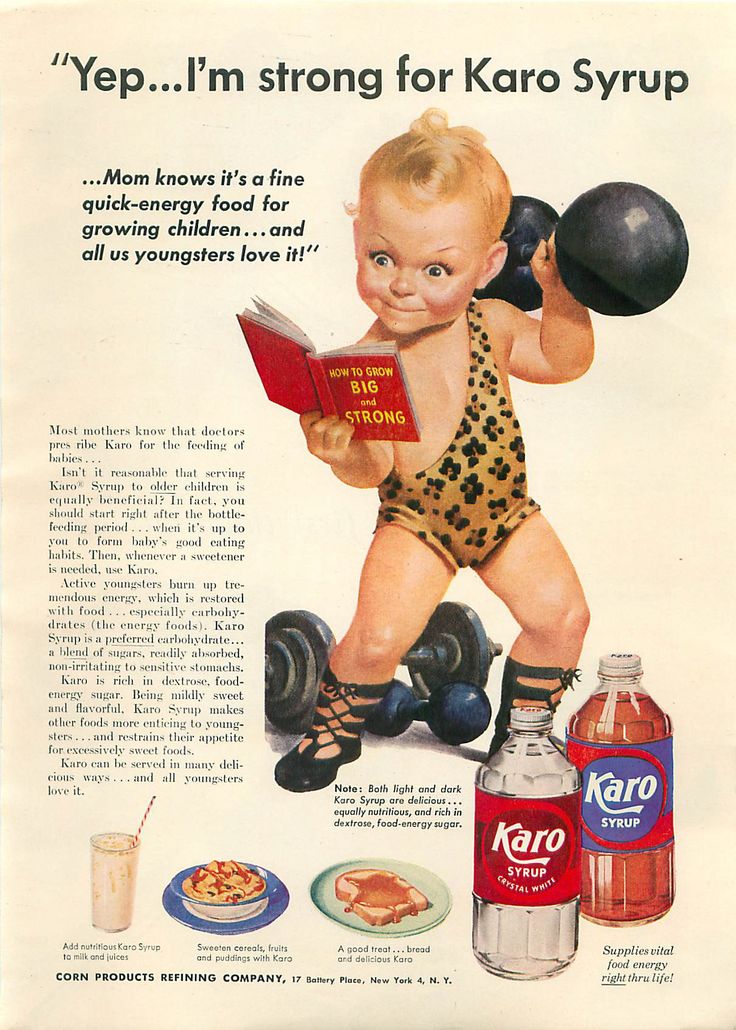
What is corn?
Table of contents:
Maize – is an annual plant of the genus Maize of the Grass family. All corn on the cob is considered a vegetable. The kernel of corn is considered a grain.
There are over 200 different varieties of corn in the world. The plants vary from 40 cm to 6 m in height and the spikes are 5 to 45 cm long with multi-colored kernels (yellow, blue or black). Corn is the only crop that depends on humans for its survival. Interesting fact: one hectare of corn produces 4 times more oxygen than a hectare of forest.
Harvest time depends on the intended use of the corn. Corn kernels are harvested when their water content is between 25 and 35%. For example, for polenta and corn chips. For sweet corn, the water content ranges from 70% to 72%. Corn (or silage) is harvested when the entire plant contains 32 to 35% dry matter. For this type of crop, the entire plant is crushed and stockpiled before being sold as animal feed.
In addition to its use as a food product, corn is used in packaging (biodegradable plastics) and in pharmaceuticals and cosmetics (in the production of antibiotics, vitamins and vaccines). The ethanol resulting from its fermentation and distillation is used to produce alcoholic beverages such as gin, as well as in the production of biofuels, providing an alternative to oil-derived gasoline.
corn verse
Types of corn
There are many types of corn (siliceous, starchy, waxy, filmy, etc.). sugar varieties are mainly used for food, and there are also bursting varieties for popcorn.
minerals and vitamins maize
sweet corn - milky when young and bright yellow when ripe, sweet tasting. Siliceous is used for the production of cereals, and starchy - flour, molasses and alcohol, bursting - for popcorn.
The history of corn
Corn as we know it today would not exist, but people grew and developed it. It is a human invention, a plant that does not exist in nature. Corn can only survive if it is planted and protected by humans.
Scientists believe that people living in central Mexico created corn 7,000 years ago. The wild grass Teosinte gave rise to modern corn. From Mexico, corn spread north into the southwestern United States and south along the coast into Peru.
Native Americans taught European colonists how to grow corn, and since its introduction to Europe, corn has appeared all over the world. It is grown in Canada and in Russia, and the corn crop ripens almost every month of the year somewhere in the world. It is an important crop in Russia and a staple food in the world, taking the third leading place.
The Benefits of Corn
Corn is a whole grain. Whole grains are the most nutritious type of grain. They contain vitamins, minerals and fiber. Corn contains much more vitamin A than other grains. It is also an excellent source of antioxidants.
Corn contains much more vitamin A than other grains. It is also an excellent source of antioxidants.
Corn is also considered a starchy vegetable. It has less sugar, fat and sodium than other starchy vegetables.
Corn is high in B vitamins, fiber, iron, potassium and zinc, essential nutrients to support a child's growth. Sweet corn also contains phytochemicals that promote healthy vision and antioxidants to fuel the immune system. Finally, sweet corn is generally not genetically modified. As the name suggests, sweet corn contains natural sugars, but the grain is not as sweet as fruits and vegetables such as apple or beets.
About 100 grams of corn contains about 350 calories. If a child is underweight, a corn diet can help him gain a few grams. Even a normal weight baby can be given this vegetable to maintain their weight after they stop breastfeeding completely.
Maize is rich in B complex. Thiamine supports nerves and brain development; niacin improves metabolism, especially sugars, proteins and fatty acids; and folate helps develop new cells.
Corn contains phosphorus, potassium, magnesium and iron. Phosphorus supports bone health; potassium and magnesium are essential for muscle and nerve function. Iron improves brain development.
The presence of antioxidants (thanks to vitamin E) makes corn good for protecting cells from damage. It contains the phenolic compound ferulic acid, which is an anti-carcinogenic agent. Antioxidants prevent tissue and DNA damage in the body.
The presence of fiber makes corn a good laxative. If a child has frequent problems with constipation, corn products such as corn kernels and cornmeal can solve this problem.
Corn kernels are natural laxatives and can be used to relieve constipation. Cornmeal is also good, but it should be whole, not refined.
Yellow corn is rich in vitamin A, a source of beta-carotene, which improves eyesight. Beta-carotene, which is not part of vitamin A, acts as an antioxidant that is good for baby's skin.
Boiled corn and corn porridge differ in the age of introduction into complementary foods.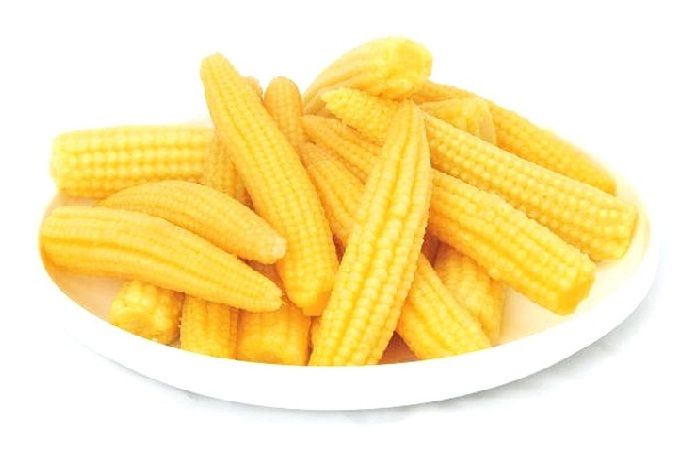 If a child is introduced to corn porridge from 8-9 months, then boiled corn is introduced after 12 months. Some Russian sources claim that the ideal acquaintance is not earlier than 1.5 years. Dr. Komarovsky suggests giving after 2 years. As usual, I will write what parents decide. If a child digests food well (yes, we look at poop, if there are any pieces of undigested food), is not prone to gas formation and gastrointestinal upset, he has teeth (they write that at least 12 pieces), with which he will bite off corn grains, he knows how to deftly and chew well, do not choke on food, then calmly give the child this product during the corn season.
If a child is introduced to corn porridge from 8-9 months, then boiled corn is introduced after 12 months. Some Russian sources claim that the ideal acquaintance is not earlier than 1.5 years. Dr. Komarovsky suggests giving after 2 years. As usual, I will write what parents decide. If a child digests food well (yes, we look at poop, if there are any pieces of undigested food), is not prone to gas formation and gastrointestinal upset, he has teeth (they write that at least 12 pieces), with which he will bite off corn grains, he knows how to deftly and chew well, do not choke on food, then calmly give the child this product during the corn season.
However, if your baby is having trouble digesting food, or he is constantly choking on pieces, or he is bad at biting, bad at chewing, then be patient while he learns these points, he is simply not ready for corn. This approach should be applied to all new products. Evaluate several indicators of the health and skills of the child , so as not to be surprised, the age of introducing the product to complementary foods has come up, but the product has not gone to the child.
Please note that if you have a good blender, you can give the baby boiled corn in the form of puree after 12 months. Here the digestion of the product is evaluated. If, after eating boiled corn, the child has increased gas formation, upset stool, bloating, then the baby is not ready for the product, we offer it for the next year.
We give boiled corn as a new complementary food only during the growing season. A frozen version is offered to a child if he got acquainted with corn in the summer. If the baby is familiar with corn porridge, then for the first time we give boiled corn more than 1 tsp, at our discretion, but not 100 grams. It takes at least 2-3 days to check the digestion reaction, so we start with a small portion and bring it to normal.
Boiled corn is difficult for children to digest, so we give the child's body a good day to work, we offer corn for lunch or for an afternoon snack.
Canned corn is best offered after 3 years. True, I abandoned this product in favor of the frozen version. It is not difficult to prepare it in the summer, and then boil it for a salad in the winter, there are more benefits, and you don’t worry about salt, preservatives, and whether my child can.
True, I abandoned this product in favor of the frozen version. It is not difficult to prepare it in the summer, and then boil it for a salad in the winter, there are more benefits, and you don’t worry about salt, preservatives, and whether my child can.
Corn sticks, flakes and any corn grits can be used almost as soon as corn porridge is introduced. Just look at the composition and consistency of the product. Corn sticks can be used after 12 months because their structure is porous, they stick to the teeth despite the fact that they melt in the mouth, and they are also sprinkled with powdered sugar. Therefore, if we give a child corn sticks, then a couple of pieces and take into account our opinion about sugar.
I would recommend corn flakes after 2 years, simply because of the hard texture and also the huge amount of sugar. Although I take sugar-free corn flakes and fill with milk, it can sometimes be given for a change. Also, I don't use them for breakfast, they are a healthy snack with milk or water.
Popcorn is recommended for children after 7-10 years due to the spices in the product. But I buy organic popcorn, which is sold without additives, just grains. It can be given after 2-3 years, again depending on the digestion of food, in a small amount. Popcorn complicates the work of the digestive tract, so be careful.
I would also like to note that corn porridge, cornmeal and boiled corn are much healthier than other food options from corn, if only because the products are processed or with spices.
You can give corn 1-2 times a week, no more than 100 grams per meal. Corn is not a product that you can eat a lot. Even children, eating the cob, usually gnaw it badly, leaving the outer film. It is perfectly! We do not touch them, they eat the most useful, leaving a film that is almost indigestible. As far as I can remember, I also ate like that, but adults forced me to eat more carefully, like a mouse, so that there were no leftovers. The norms are approximate, the child himself does not eat much, the product is satisfying, and difficult to bite and chew.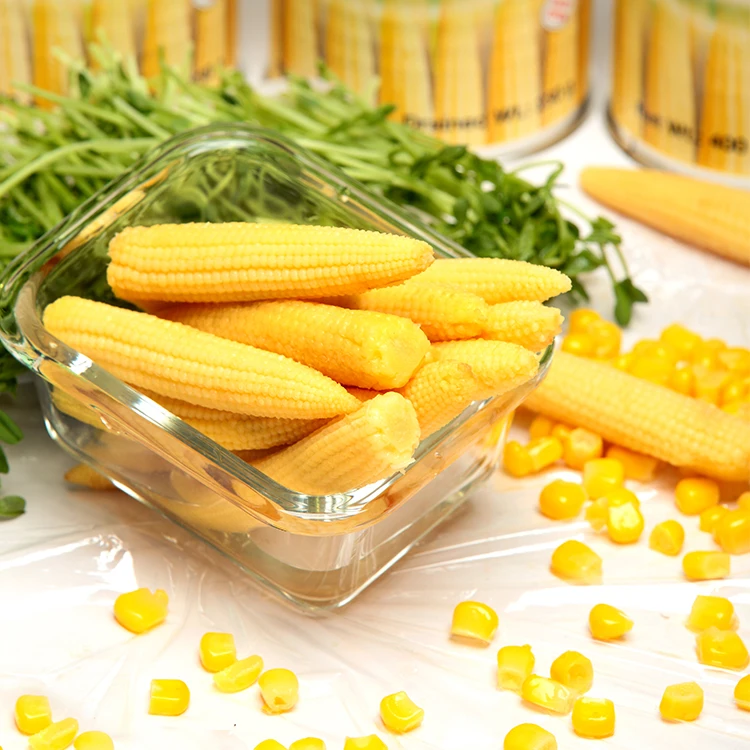
Raw corn can I give it to a child? I gave! It contains a lot of vitamin C, which is lost during heat treatment. Therefore, if the child really wants to, he is over 1.5 years old, he has teeth, you are sure of the milkiness of corn (it should be as young as possible), it is sweet and tasty, and also completely organic, then let him chew a little (no more than 30 grams ). The main thing is that the child does not suffer from chronic diseases of the gastrointestinal tract. My opinion, so I advise you to consult a pediatrician.
corn complementary foods
Tips for including corn in your baby's foods
- Don't give your baby corn as a first meal. Instead, wait until he is familiar with other vegetables and fruits on the safe list.
- Corn can be yellow or white - both are equally delicious. The newer, super-sweet varieties tend to stay sweet longer because the sugar in the corn takes longer to turn into starch.
- For best taste, cook and eat corn as soon as possible after purchase.
 Until then, store in the refrigerator, as this prevents the sugars from turning too quickly into starch.
Until then, store in the refrigerator, as this prevents the sugars from turning too quickly into starch. - Canned corn contains less nutritious protein than fresh corn. If you decide to give your child canned corn, read labels carefully and avoid brands that contain sugar or salt.
- For the first time, fresh corn can be given as baby puree, which is easier to digest. This can be done at home by using a blender to puree the grains along with enough water to achieve the desired consistency.
- Until the child is one year old and has learned to chew food well, do not give him whole grains. They may present a choking hazard.
Is corn dangerous for children?
Whole grain kernels, including corn, are a potential choking hazard for children under 12 months of age. To reduce the risk, corn on the cob is served, as the child's teeth will break the kernels, thereby reducing the risk. However, it is still necessary to stay close to the child during meals and watch closely. Theoretically, you can choke on any food.
Theoretically, you can choke on any food.
Allergies and corn
Complementary cornAllergies to corn are rare. Allergies are caused by proteins present in grains. Lipid transfer protein (LTP) is the main cause of allergy because it remains even after corn is processed or heated and after digestion. Other potential allergens are storage proteins and corn pollen present in the kernel. Some people with fruit allergies (especially peaches) may also be allergic to corn. As with any new food, we start by offering a small amount of corn.
Corn allergy symptoms are common to any allergy, namely runny nose, nausea, vomiting, indigestion, diarrhea, skin rash, sneezing, headaches, asthma, and anaphylaxis.
The first obvious way to deal with a corn allergy is to avoid corn and corn-derived products. Give your child homemade food because ready-to-eat food can contain corn in any form. If the reaction is severe, see a doctor.
Corn intolerance
Corn intolerance differs from allergies in that it manifests itself in the form of digestive problems.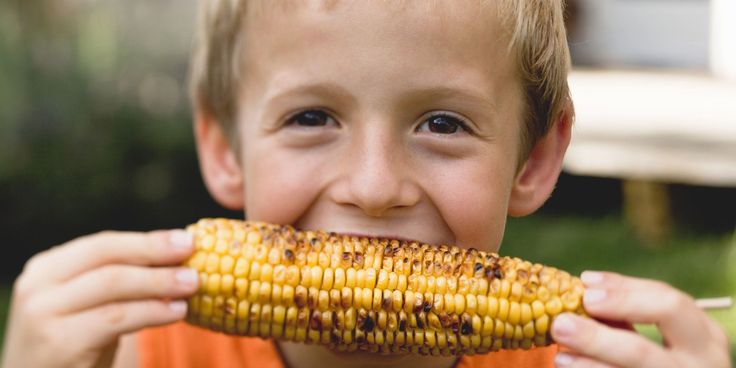 A child may have the following symptoms if they cannot tolerate corn:
A child may have the following symptoms if they cannot tolerate corn:
- Bloating
- Gas
- Abdominal pain
- Diarrhea
Corn intolerance may be short-lived compared to allergies and resolve as the child grows.
How to give corn to children?
For the first time a child gets acquainted with corn in the form of porridge. Corn porridge is introduced into the child's complementary foods at about 8-9months, or to be more precise after buckwheat and rice. Porridge should be of a homogeneous liquid consistency, so for the first time it is prepared from cornmeal or semolina, we look at the child's ability to chew.
Closer to 12 months, you can introduce your baby to boiled corn. For the first acquaintance, you can make baby puree from corn grains, or you can simply offer the cob, where the grains are cut in half. It is better not to offer grains separately from the cob, as the risk of choking is higher. When a child bites off the cob, he controls the size of the bite, and the grains are smaller, without a dense film, which reduces the risk of suffocation. Children almost always like corn, as it is sweet, tasty, and unusual in shape. I only ask you to serve a slightly warm product, and not piping hot, straight from the pan, otherwise love will end before it starts.
Children almost always like corn, as it is sweet, tasty, and unusual in shape. I only ask you to serve a slightly warm product, and not piping hot, straight from the pan, otherwise love will end before it starts.
How to choose and store corn
Choosing sweet corn with bright green leaves and pale stigmas . The corn should be bright , plump and without dents or rot . Before buying, please open the corn leaves to see the grains and the tip, which most often begins to deteriorate. Leaves should not be discarded, they protect the product from drying out. After buying corn, it is better to use it immediately, the longer it lies without a refrigerator and leaves, the faster it dries. Corn is best eaten within two days. Store it in an airtight container and in the refrigerator. Corn needs to be stored away from sunlight or heat because the sugars in the grains are easily converted to starch.
If it is not allowed to peel the leaves from the corn, press the corn with your hands to feel its firmness. Hard corn is fresh and has healthy kernels.
Important, there was a separate article about corn porridge, I will not repeat it.
Boiled corn can be stored for up to 24 hours in the refrigerator and reheated before serving. I don’t see the point in storing longer, it loses its taste and aroma. It is best served freshly brewed.
Nitrates, pesticides and corn
Corn does not accumulate nitrates on the cob, and pesticides should be avoided when harvesting it from the fields. Field-grown corn is often treated with herbicides over the summer. It is believed that after the last treatment, a month should pass, then this chemical is not dangerous to human life. That is why it is so dangerous to buy or pluck corn from the fields. No one can guarantee that corn is chemical-free, since it could have been processed yesterday.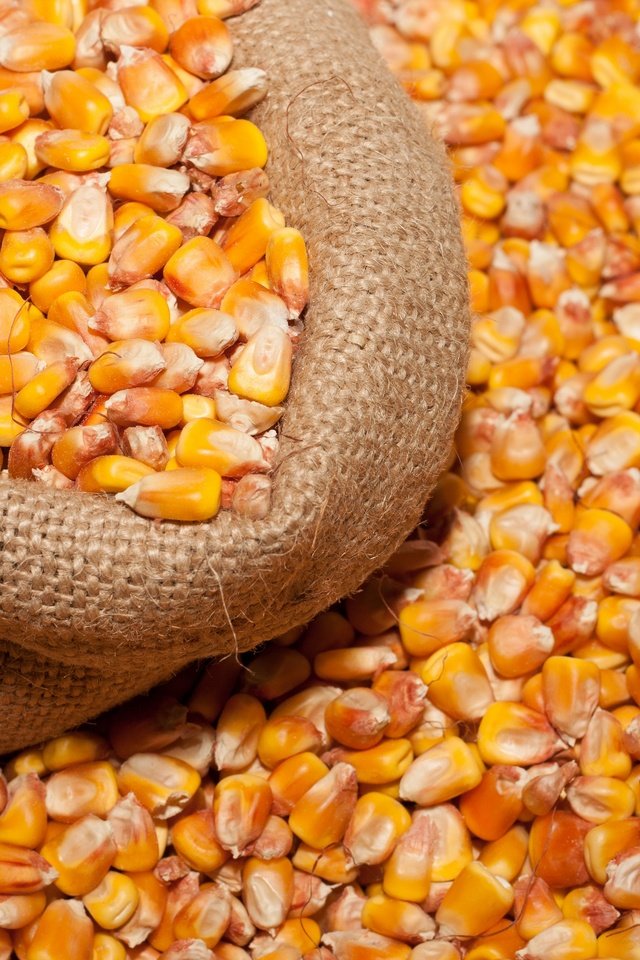
To be safe, we always buy corn with green and juicy leaves that do not have dark spots. Without leaves it is better not to take. And also corn should be smelled, it should not smell like chemistry. Even if after cooking, the product also gives off chemistry, then it is better to throw it away. At best, the body simply gets rid of chemicals, this happens with the help of diarrhea.
Why shouldn't children be given corn too often? boiled corn for children
Boiled corn is not recommended for people with stomach ulcers, duodenal disease, poor blood clotting and thrombophlebitis.
It is also important to note that an allergic reaction or individual intolerance to corn is possible. If you often eat corn, then there may be a lack of vitamins, especially niacin in the body. Corn lacks amino acids (lysine and tryptophan). Corn has a negative effect on people with diabetes, as it increases blood sugar levels in the body. It contains a lot of starch.
When corn is broken down in the colon, a lot of gas is produced. This product contains a lot of sugar, so it can lead to cavities in some people. This is a relatively rare side effect of corn, but should not be taken lightly. Corn contains a large dose of sugar and carbohydrates. Excessive consumption of corn can certainly lead to weight gain. Corn contains a sufficient amount of starch. Starch can cause drowsiness and lead to lethargy.
These are the side effects of eating corn. Most of these so-called negative effects of corn can be countered with a balanced diet. Otherwise, just watch the portion size.
The best way to cook corn
Cooking corn is very simple, remove the leaves and stigmas, drop into a large pot of boiling water. We cook young sweet corn for about 15-40 minutes (depending on the youth and size of the grains), and old corn for 1-3 hours.
It is better to offer corn porridge to a child before the age of one. After a year, you can give corn on the cob. It can also be fried and baked with butter. You can also cut corn off the cob and then either steam it or make soup. You can also use frozen or canned corn, but only fresh is ideal for children.
It can also be fried and baked with butter. You can also cut corn off the cob and then either steam it or make soup. You can also use frozen or canned corn, but only fresh is ideal for children.
We have several corn dishes in Russia - porridge, boiled corn on the cob, which we associate with the Black Sea, and crab salad. Before the introduction of complementary foods to my children, I knew corn only in these types.
But it turned out that corn is just an amazing product that can be used anywhere when you need to add satiety and color. Therefore, do not hesitate to experiment. I add corn to pilaf, funchose, soup, scrambled eggs, to pasta, meatballs, pancakes, salads and even sandwiches. You don’t need to add a lot of corn, you can add about 50-100 grams, it gives brightness to the dish and pleasant corn notes. With corn grains, the dish becomes summer.
As I wrote above, it is harmful in large quantities, but if a little on a large dish, then this is good and variety.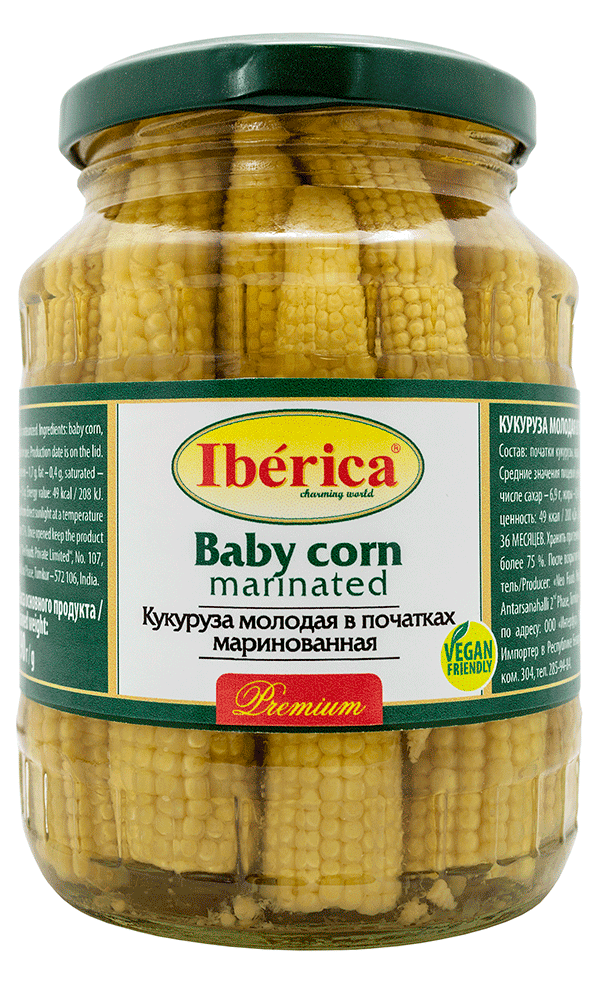 Children just need it. And do not forget that you can use cornmeal, flour, starch, cereals, frozen and fresh grains, popcorn, cereal, etc.
Children just need it. And do not forget that you can use cornmeal, flour, starch, cereals, frozen and fresh grains, popcorn, cereal, etc.
Frozen corn for children
corn for childrenCorn perfectly tolerates freezing, so it should be prepared in the summer. We just buy ordinary heads of corn, cut off the grains with a knife, which we lightly dry on a towel, and then put them in freezer bags. We put a date on the package. Store for about 12 months. Corn puree can be frozen, but the consistency may change. It is better to use frozen grains for making baby puree.
I write about this very often. Frozen is better than canned. I have been cooking corn since the summer because the stores sell old fodder varieties, and I like sweet and young ones. So I take care of it myself. Approximately I freeze about 2 kg. This mass is enough for the whole winter, even a lot, left this year. I put corn in dishes of 50-100 grams, cook 2-3 times in 2 weeks. I advise you to spend a little summer time, but it saves money, health benefits, bright colors in a culinary dish, the aroma of the sun and corn on your plate.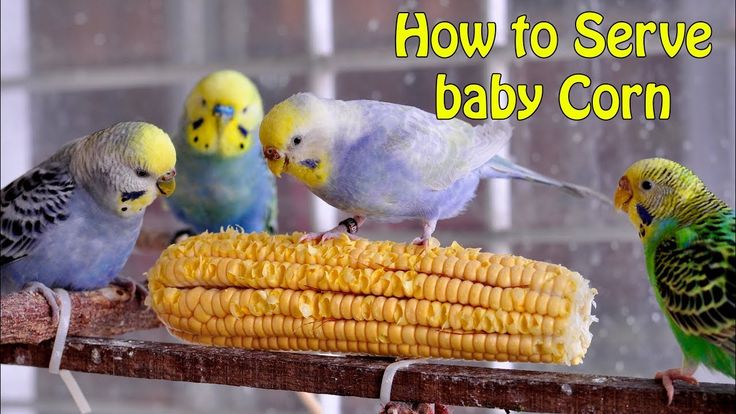
How to prepare boiled corn for children?
We buy corn on the cob. Clean the leaves and stigmas, wash.
Steamed: Put the corn in the steamer, cook until tender, about 15-30 minutes, depending on the size and maturity of the product.
Boiling: Cobs can be placed in cold water and boiled until tender. Or put the corn already in boiling water and cook until tender. How best to decide for yourself. Cook young sweet corn for about 15-40 minutes, old - about 1-3 hours.
Roasting: Corn on the cob cooked only in foil with butter and your favorite spices. For children without spices. We coat the cob with butter, lightly salt (the child is more than 12 months old, so it’s already possible), wrap it in foil and bake for about 30-40 minutes at 200C.
Roasting: Fry cobs in a pan or better over a fire for about 30-40 minutes, grains in a pan for about 3-5 minutes.
Preparing baby puree: After cooking the corn, separate the kernels from the cob, or use the cooked kernels.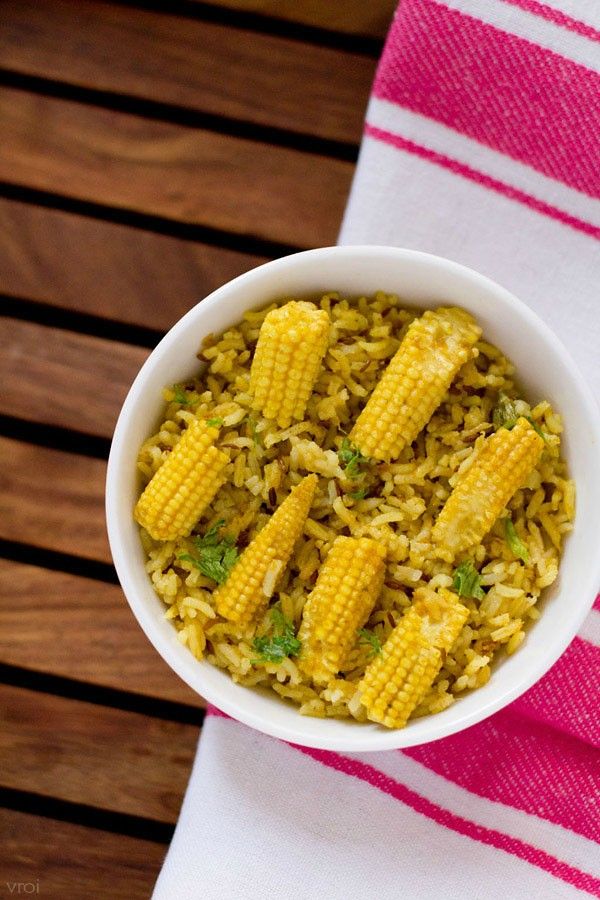 Corn grains must be beaten with a blender for a uniform consistency. To get rid of the film and achieve a more delicate texture, you can pass the puree through a plastic sieve. Add liquid as needed.
Corn grains must be beaten with a blender for a uniform consistency. To get rid of the film and achieve a more delicate texture, you can pass the puree through a plastic sieve. Add liquid as needed.
Finger food and corn for children
Corn on the cob is a finger food that a child can easily pick up and eat. But I've also seen what imaginative moms come up with. You can serve crackers with a corn salad on top, or wrap the corn filling in dough and cook something like pies in the oven, as well as an option for regular corn kernel pancakes. And this is only a small part of the possible options.
It is also important to feed the corn correctly. It shouldn't be too hot. It can be served on a stick or on a fork (we offer this at home), its size should correspond to the child. And then if you give a giant corn, which he simply cannot hold in his hand, either because of the length, or because of the weight. So that the child does not choke, the grains can be cut along the entire length.
Ready-to-eat corn baby food
Ready-to-eat corn baby food in the form of porridge is common, but baby puree or multi-ingredient puree containing corn is very rare. I offer an incomplete list of products that can be bought on the Russian market.
I draw your attention, there are very few dairy-free corn porridges without sugar, carefully read the composition. And also the age on the package is not very true, since I would be careful not to give milk porridge at 5 months.
Hipp
- Puree My first soup vegetable cream soup with chicken from 7 months 190 grams
- Puree corn from 5 months 80 grams
- Puree Delicate vegetables with turkey from 12 months 220 grams 200 grams
- Milk rice-corn porridge with prebiotics from 4 months 250 grams
- Milk rice-corn porridge with peach and apricot with prebiotics from 4 months 250 gram
- Milk corn porridge with fruit with prebiotics from 5 months 250 grams
- Milk corn porridge from 5 months 200 grams
Bibikol
- Milk corn porridge from 5 months 200 grams
NUTRILON
- Milk corn Abrosos and Banan priece milk corn porridge from 6 months old 200 grams
- Dairy-free corn porridge from 5 months old 180 grams
Nestle
- Dairy-free corn porridge My 1st Porridge.
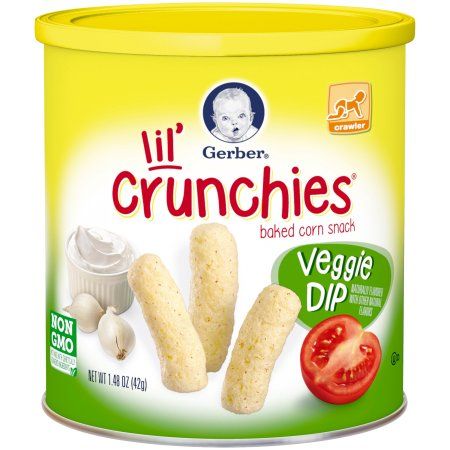 We start feeding from 5 months 200 grams
We start feeding from 5 months 200 grams - Sage
Can children have corn, what kind, how much
Contents
This South American cereal has long ceased to be exotic. Corn is grown in Russia along with other crops, it is used to produce cereals, canned food, flour, and confectionery. It is hypoallergenic, practically does not accumulate harmful impurities.
Pediatricians to the question whether it is possible to give corn to children from the first year of life, answer in the affirmative.
Benefits and harms of the product
Corn kernels do not contain gluten. This is important for those suffering from vegetable protein intolerance. The cereal contains a lot of useful fiber, vitamins B, E, K, D, carotene, starch, phosphorus, iodine, copper and calcium.
This product promotes bone health, immunity, vascular, hormonal and nervous systems, supports overall metabolism. In addition, it saturates well due to the large amount of "slow" carbohydrates.
It is recommended to eat corn if you are prone to constipation, gallbladder disorders, frequent skin rashes, asthmatic manifestations, vision problems, hypovitaminosis.
It is necessary to treat corn with caution in case of flatulence, diarrhea, inflammatory diseases of the stomach or intestines, pathologies of the hematopoietic organs, disorders of carbohydrate metabolism.
At what age and how to give to children
Introduction to corn should be started with liquid porridge on water. It is recommended to offer it already at the age of 6-7 months, as an alternative to rice or buckwheat. The dish can be cooked from whole grains or ordinary corn chips, without the addition of salt and sugar. Before use, the porridge is rubbed to a homogeneous puree.
For the first time, 1 tbsp. l. In the absence of adverse reactions in the child: diathesis, skin itching, nausea or colic, you can supplement the diet with corn up to 3 times a week, replacing it with one feeding.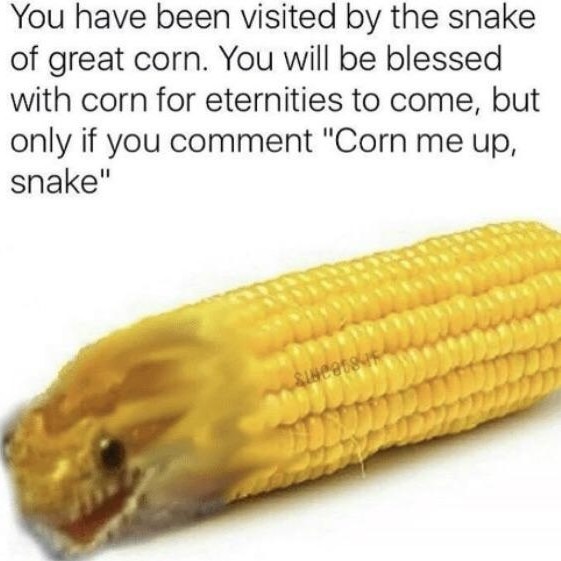
Viscous milk porridge can be given to babies from 1 year old. During cooking, you can slightly add salt to the dish, add a little sugar, fresh berries or dried fruits to it: apricots, raisins, dried apricots.
It is not recommended to eat more than 100 g of such porridge for babies under 3 years old. A large amount of corn can provoke indigestion: heaviness in the stomach, bloating, loose stools.
Whole boiled corn is allowed for children from 2 years of age.
The baby needs not only to be fed with it, but to be taught to chew grains thoroughly - their shell remains dense even after heat treatment. Up to 3 years old, babies are recommended to give grains of milky ripeness, steamed or lightly baked. They have a more delicate taste than mature ones.
You can add this corn to salads or vegetable stews. Also suitable for baby food:
- casseroles;
- vegetable or meat soups with this cereal;
- stew;
- tortillas, fritters, puddings, cornmeal biscuits;
- homemade popcorn without caramel or chocolate.
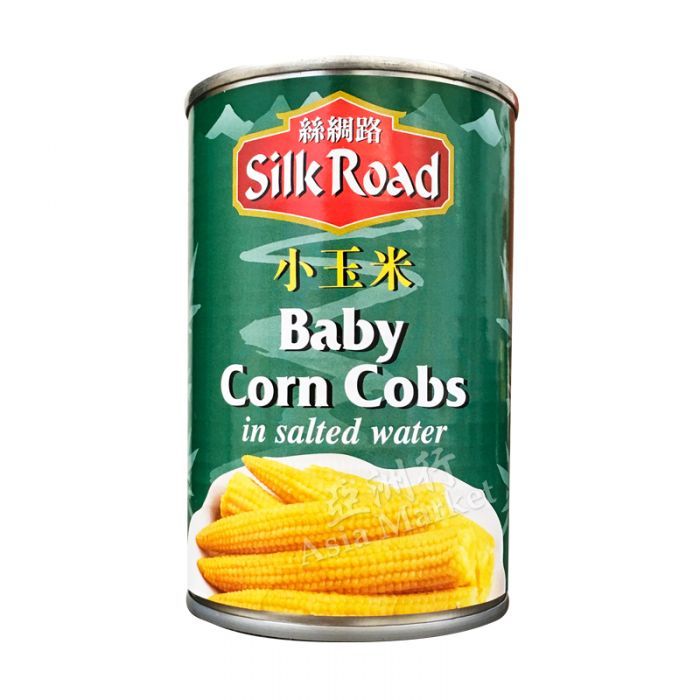
Additional recommendations
Children should choose only intact corn, without dark spots or dried kernels, for cooking. Covering leaves on the cob should be tight, fresh and green. Before cooking, the product should be washed with running water, then soaked for 20-30 minutes to remove the smallest particles of dirt.
Most children like the taste of corn and prefer it to other cereals. In the absence of contraindications and good tolerance from the age of 5, the product can be included in the menu daily. If desired, young grains can be eaten raw. At the same time, it must be remembered that corn does not go well with legumes, mushrooms, white cabbage and other foods with coarse fiber.
Can children eat canned corn
Product of industrial origin is not suitable for baby food. Some nutritionists also advise pregnant and lactating women to avoid it. The reason is the high content of artificial preservatives and stabilizers in such corn, which manufacturers are often silent about.

